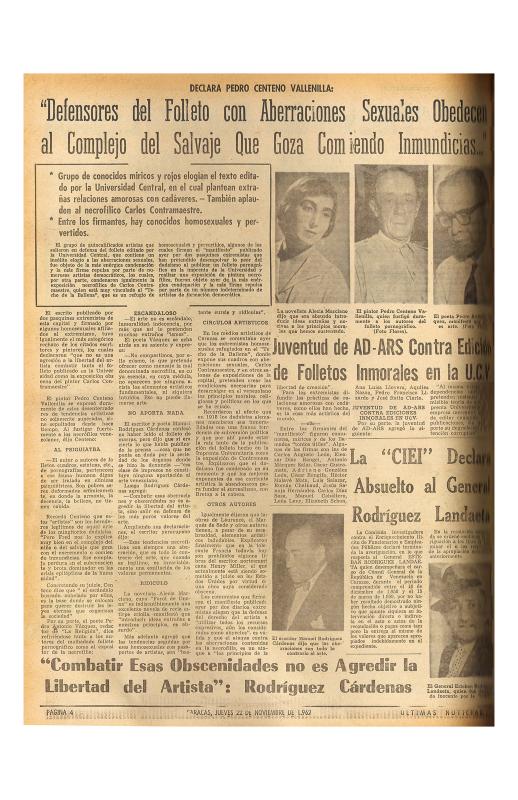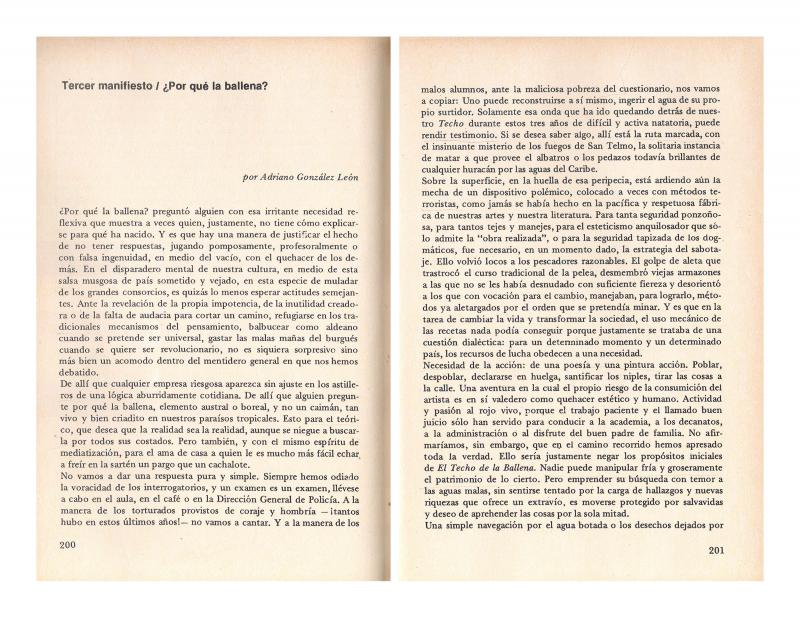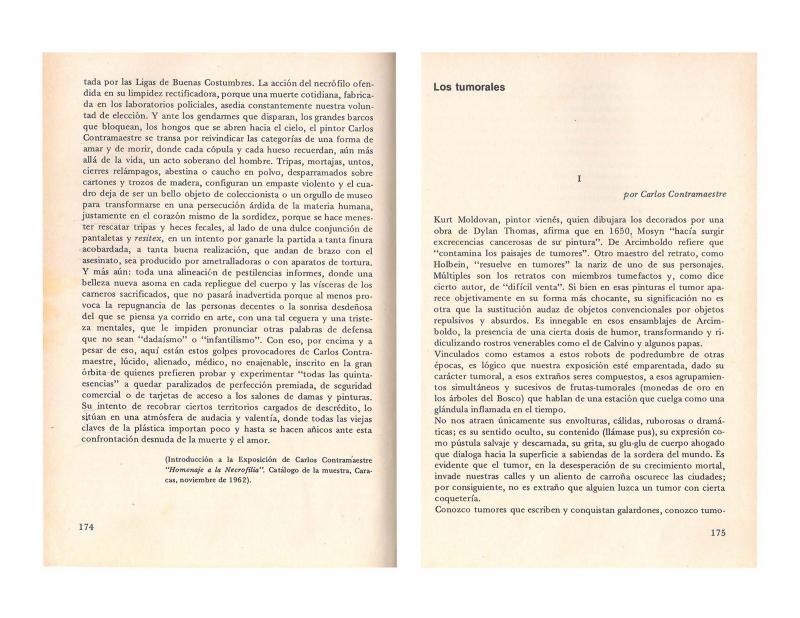Venezuelan writer Adriano González León (1931–2008) wrote this text as the introduction to the catalogue of the Carlos Contramaestre exhibition entitled Homenaje a la Necrofilia. Like the author, Contramaestre was a member of El Techo de la Ballena and the show was held at the group’s gallery in Caracas in November 1962. This was indisputably the most controversial of all the exhibitions organized by members of that group. It was met with rage and condemnation on the part of the cultural milieu and the general public (see the article “Declara Pedro Centeno Vallenilla: ‘Defensores del folleto con aberraciones sexuales obedecen al complejo del salvaje que goza comiendo inmundicias...’” (ICAA digital doc. no. 865836)). The catalogue was printed by the Universidad Central de Venezuela press, which meant that that university was the target of attacks in the media, accusing it of spreading an aberrant and pornographic message.
In his essay, González León heralds the advent of a “new aesthetic” and practice in Venezuelan art thanks to these works and this exhibition by Contramaestre, a doctor by profession. The strategies deployed to make the works were morbid, profane, and sordid, as well as provocative or delirious in the Surrealist or Dada sense, but they examined taboos and violated notions sanctified by a society considered, by these artists at least, depleted. On the formal level, the artist looked to Informalism, where the material is held above all other visual resources. By pouring guts, viscera, bones, and feces onto the works, Contramaestre was able to show without any reservation his irreverence and dark humor while also exposing what he considered the trappings and hypocrisy of Venezuelan society. On these grounds, the author announces a new beauty in the form of bold experimentation.
The Techo de la Ballena was an avant-garde group of Venezuelan visual artists and writers active from 1961 to 1968. They combined different disciplines (visual art, poetry, photography, film, actions, and others) to create revolutionary art that questioned and disputed traditional social and cultural values in the context of a decade riddled with political violence, which they mirrored in the realm of art. The framework for the group’s activity was the guerrilla movement, the formulations of the intellectual left, political repression, a city deformed by accelerated and forced growth under the developmentalist model embraced by a recent democracy under Rómulo Betancourt (president from 1959-64). Their aesthetic was tied to Informalism with a strong dose of aggression to contest the values of abstract geometry, traditional landscape art, and even social realism; their strategy embraced subversion and provocation, the irrational and the surrealist. They published a good many texts—and three issues of the magazine Rayado sobre el techo—and organized a good many exhibitions. The members of the group included Venezuelan artists Carlos Contramaestre, Juan Calzadilla, Caupolicán Ovalles, Edmundo Aray, Francisco Pérez Perdomo, Salvador Garmendia, Adriano González León, Fernando Irazábal, Daniel González, Gabriel Morera, Gonzalo Castellanos, Perán Erminy; and foreign artists Dámaso Ogaz (from Chile) and J. M. Cruxent, Ángel Luque, and Antonio Moya (from Spain).
For others texts by members of El Techo de la Ballena, see “Tercer manifiesto: ¿Por qué la ballena?” (doc. no. 1097576), where González León explains the nature of the group and its activities; and “Los tumorales I y II” (doc. no. 1097559), where Juan Calzadilla and Contramaestre present Contramaestre’s exhibition Los Tumorales held at the Galería El Techo de la Ballena in Caracas in 1963.



